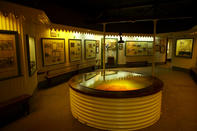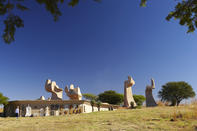History of the Town
On 31 October 1899 the first decisive battle of the Second Anglo-Boer War was fought. The main British force of 12 000 men in the Colony of Natal, commanded by Lieutenant-General Sir George White (VC), suffered 1 272 casualties at the guns of General Louis Botha's forces, and retreated into the town of Ladysmith in KwaZulu-Natal to sit out what the British thought would be a brief siege.
Meanwhile, General Piet Joubert, hero of the First Anglo-Boer War, had again been declared Commander-in-chief of the Boer forces for the next set-to with the arrogant might of the British Empire. But by late 1899 he was an old man and the fight had gone out of him. His basic plan was to do as little fighting as possible by laying siege to the various British garrisons and then cutting off their supply and communication lines. His tactic did tie down the resident British forces, but it also bogged down a large number of Boers. The British solution was to simply pour more and more troops into the fray - some half a million by war's end. The siege of Ladysmith caught world attention and lasted 120 days.
On 27 February 1900, General Buller's forces crossed the Tugela River and advanced on Ladysmith, causing the Boers to abandon their positions. The siege was relieved the following day, 118 days after it began. British casualties were high; 563 soldiers died of disease, 211 were killed in action, 59 died of wounds and 10 were reported missing. It is not known how many Boers were killed in action, but an estimated 60 died of wounds.
The story of the siege is depicted in Ladysmith’s Siege Museum - well worth visiting. From Platrand/Wagon Hill, a battle site at which the Boers unsuccessfully attacked the defensive line, you'll get a good view of the entire siege area.

